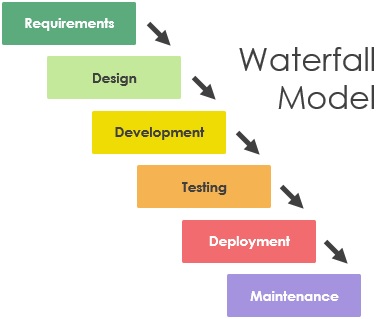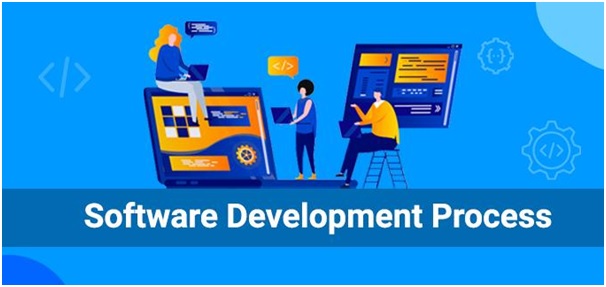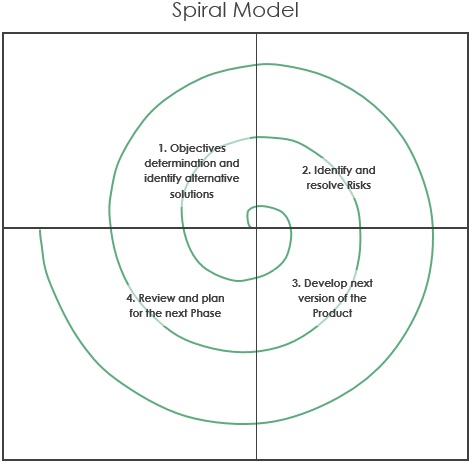Table of Contents
Introduction
The outsourcing of software development is an option used by companies that want to cover the lack of technological skills in their businesses. When hiring a service of these characteristics, it is essential to assess which of its modalities best suits our needs.
What do onshore, offshore, and nearshore mean?
The main difference between onshore, offshore, and nearshore is the distance that separates the contracting company and the contracted one. For example:
– Onshore: it would mean hiring a national software development company.
– Offshore: would involve partnering with an Asian or American company.
– Nearshore: it would mean opting for a European provider or one from a nearby country.
Many nearshore companies help organizations to build their digital transformation, such as Zircon.tech, which carry out some of the most complex projects, designing and developing technological solutions from start to finish.
What is a software development process?
In this digital age, software is an important aspect for businesses that want to gain a competitive edge in the market. Though the various phases of the software development process can be a little overwhelming, there are many systems out there that can make the process much easier.
In this article, I want to shed some light on the various stages of SDLC and the techniques to improve the speed and efficiency of the software development processes.
As per IBM Research,
“Software development is a set of computer science activities committed to the process of creating, designing, deploying and supporting software.”
Elaborating on the meaning of software development, it is a repetitive logical process that ran on purpose to build programmed software. This software is created to fulfill the business needs, goals, or objectives. The software development life cycle includes researching, designing data and process flow, technical documentation, rigorous testing, debugging and launching.
This whole process is collectively known as the software development life cycle (SDLC). There are many reasons to develop software which are categorized into three most basic needs as follow:
- To achieve the specific business objectives of the clients
- To solve the real-world problem
- For personal Use
The increasing demand for quality management in the development process has enabled software engineers to adopt a systematic approach in their work. There are several methods for it like Agile, Scrum, Waterfall, and more which we will be discussing in detail later in this article. Software development comprises two types of functions: backend development and Front-end development.
What are the steps of software development processes?
To develop software, you need to consider everything from requirement analysis to stakeholder communication, development technologies, and ongoing maintenance systems. You might be familiar with all of these because it is all the same across every software development method used in the industry. They just differ in terms of sequence, management, and speed which depends on your business needs, project, and team size.
1. Requirements Gathering and Project Analysis
This is a research phase of the development process which is focused on developing, collecting, and analyzing the business requirements of the software product. You can accomplish this by conducting meetings and interviews with the project managers, stakeholders and if possible then end-users too. That’ll help you determine the specific requirements of the software project.
In this phase of the product development process, you can ask the questions like:
- Who is going to be the end-user of the software?
- How will they use it?
- What will be the input and output of the system?
- What problem will it solve?
These questions will help you gain clarity about the project to perform the initial risk analysis. And once you have gathered all the requirements, you can easily carry out the requirement analysis.
This analysis is carried out to check for the validity of the requirements as well as the possibility of its implementation in the software product. This will help you document the specific requirements that will serve as guidelines for the next stages of the software development life cycle.
And that’s not it. The requirement analysis will help the software testing experts to start planning for possible test scenarios.
2. Design process
In this stage, after getting our requirements straight, the next step is to design software. It includes the way it looks but more importantly the way it works:- the functionality and the flow. As Steve Jobs said, “Design is not just what it looks and feels like. Design is how it works.”
This stage of SDLC covers things like creating simple wireframes to show how interactions will work in the software to building full-fledged prototypes using tools like Marvel and InVision to test with users.
And if you need feedback then you can opt for design sprints that can help you to get your idea or a feature quickly in front of users. No matter how you do it, the design will help you to validate your ideas through valuable feedback from the clients or the end-users before you commit your idea to code.
3. Software development process
Once the functional design of the software is approved then it is time to get into crafting the product through code and technology framework as per the requirements and the statement of work.
No matter what kind of development you are utilizing, this phase is one of the hardest and riskiest stages of the SDLC. The goal here will be to stick to the “Statement Of Work” and build a clean and efficient software product.
4. Application Testing
Once the software product is developed, it is necessary to test the functionality of every application in the entire system. In this stage, the testing team will verify whether the application works according to the customer’s specific requirements or not. A special testing environment and several testing scenarios are developed for this.
It is possible that during the test process, the QA experts may find some bugs or defects. In that case, the product will be sent back to the development team for fixing. Once the software developers fix the issue then the QA experts will again run the tests.
The process will continue until the software product becomes defect-free and fully-functional according to the client’s business needs. Every software development company has its own set of standards for QA and testing.
5. Deployment
Now after the software product is fully developed and completely tested, it needs to be prepared for the formal launch in the market. Product launch is part of a business strategy. Sometimes a product is first released for a limited segment to test it in the real business environment which is also known as User Acceptance testing.
Then if needed, the necessary improvements based on the feedback are implemented in the product. After that, the software product is released in the market. Some software development companies make use of a continuous deployment model or Application Release Automation (ARA) tool for automated deployment of the product.
Study says that workflow automation can transform the workplace into more streamlined, efficient, and accelerated growth.
6. Maintenance
As we discussed, SDLC is a cycle, it doesn’t end when the product is launched. On the counter, it is the beginning of a new project or it could also get extended to post-launch services. The real issues arise once the users or clients start using the software products.
Once people start using a software system, they may find some undetected bugs, customers and their needs always evolve so they may also ask for new features or different functionalities. So, the procedure to take care of a developed product is said to be as maintenance and support.
More useful Resource on Software Development Process:
Software Development Methodologies by TatvaSoft
Modern software development explained by Infoworld
What are the models in SDLC?
The Software development life cycle we discussed above is pretty much the step-by-step guideline to develop a software product. You need to excel at each phase if you want to deliver a great software development services experience.
But in which way you do that, it’s up to you. To manage complex software development projects, several approaches have been commenced in the industry. You just have to choose the right one for you.
Pick the most suitable system in context to your business goals, size of the project, team, and other factors. Here, I have described the top 5 software development models and practices to help you along the way.
1. Waterfall model

A waterfall model is a sequential system of software development. Every phase depends on the outcomes of the previous stage. It’s not just that, every task represents a great similarity on each stage. It is a typical engineering approach for design and development.
Each stage is strictly documented and has concrete outputs too. Once the project is started, you can’t re-evaluate your requirements and you can’t see or try the software until the process is completed.
The waterfall design is ideal for simple, small and mid-sized projects. It also works for projects that need strict control or are adhered to multiple rules and regulations.
2. V-model (Validation and Verification models)
V-Models are just another kind of linear model where each stage of SDLC has a correlated testing activity. Any software development company working with these models can offer exceptional quality control in its Workflow software. But that also makes this model one of the most expensive and time-consuming software development techniques.
Though you can detect the mistakes in requirements specifications, code, and architecture very early in this model, still it is difficult and expensive to implement them in the project. V-Model is ideal for scenarios where failure and downtimes are unacceptable.
3. Iterative and incremental development models
In this type of development life cycle, the model is divided into various small iterations. You can also add new software modules with no or little change in already existing modules. The software developers can operate the development cycles either in a sequence or in parallel. The sequential development cycle will make the project long and costly while the parallel development cycle will help with rapid product delivery.
In an iterative development model, you can make the necessary changes on any particular iteration. Though the changes occur, the software design remains consistent because each iteration builds on the previous one.
In this model, the software is delivered to the clients in various iterations. Also, there is no need to complete project specifications from the start but once the project is started, you can’t change all the requirements downright. You must clearly define the primary requirements at the beginning of the software development lifecycle.
This SDLC model allows customer involvement at a certain level because of the possible need for improvements in the product. This type of model is used to develop large enterprise-grade applications that comprise many parts such as web services or microservices.
4. Spiral model
The spiral model is a risk-driven software development model. It was introduced by Barry Boehm in 1986 to deal with the drawbacks of the conventional waterfall model of software development.
As you can see in the figure above, the spiral model looks like a spiral with many loops. The number of loops can differ from project to project. In this model, software products are delivered in loops.
The primary task of the spiral model is to manage risk therefore the number of loops in the process will mainly depend on the project risk. Project managers have an important role to play in this because only they can decide the number of phases in the development life cycle.
A typical spiral model of development will last around 6 months and it consists of 4 important phases including meticulous planning, risk analysis, prototype building, and assessment of the previously delivered parts.
This kind of model is ideal for large and complex projects or R&D projects that have too many innovative requirements.
5. Scrum and Agile development models
Agile development is a dynamic approach to the software development life cycles. In contrast to the waterfall system which is a tightly controlled sequential model, Agile makes use of cross-functional teams.
These development teams sprint by focusing on projects for anywhere from two weeks to two months. A scrum master is assigned to the software development project to ensure that the sprints and milestones are achieved within the predetermined timelines.
A sprint planning tool that can keep up with your agile team! Get started with our sprint template today, and hit every sprint goal.
In the agile models, the cross-functional teams work in sprints to develop and deploy software for the customers. Agile methodologies allow software development agencies to build and analyze their products quickly without the need for any considerable amount of investment.
In the agile models, testing is conducted after each milestone is achieved. This makes it easier to detect any defect or bugs in the system or return to the earlier version if any problem is detected. Though it has many benefits, the dynamic nature of the agile models sometimes costs more time and money than estimated.
Conclusion
When you are just about to start the project, it is common to feel overwhelmed by the numerous choices that lay ahead. But at that moment you have to take a step back and analyze your requirements and your goals.
As we discussed that every software development process has similar steps and the only difference is the way of its implementation. Look for a model that is suitable for your project and your team. Picking the right development model is critical to the success of the project. And don’t forget that it is just a lifecycle. Even if you make mistakes for the first time, you can always improve in the second cycle.
So, I hope you have enjoyed reading this article and I like to think that it would have been of help to you. However, if you have any queries or suggestions related to the software development process then feel free to share them with us in the comments section below.


